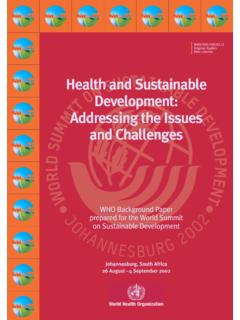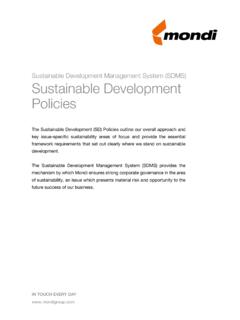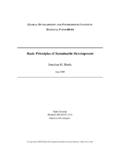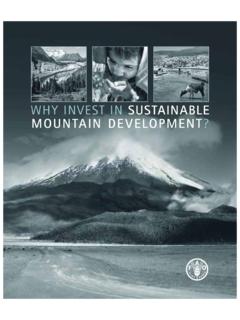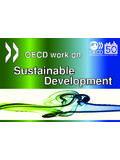Transcription of Science, technology and innovation for sustainable ...
1 Science, technology and innovation for sustainable development in the global partnership for development beyond 2015 Thematic Think Piece ITU,OHCHR, UNCTAD, UNEP, UNESCO, UNFCCC, UNIDO, WIPO, WMO The views expressed in this paper are those of the signing agencies and do not necessarily reflect the views of the United Nations. January 2013 2 Following on the outcome of the 2010 High-level Plenary Meeting of the General Assembly on the Millennium development Goals, the United Nations Secretary-General established the UN System Task Team in September 2011 to support UN system-wide preparations for the post-2015 UN development agenda, in consultation with all stakeholders. The Task Team is led by the Department of Economic and Social Affairs and the United Nations development Programme and brings together senior experts from over 60 UN entities and international organizations to provide system-wide support to the post-2015 consultation process, including analytical input, expertise and outreach.
2 3 Science, technology and innovation for sustainable development in the global partnership for development beyond 2015 A post-2015 agenda for development : Ensuring equitable and inclusive globalization Debates on how best to promote sustainable and inclusive development are incomplete without a full consideration of issues of science, technology and innovation (STI). Access to new and appropriate technologies promote steady improvements in living conditions, which can be lifesaving for the most vulnerable populations, and drive productivity gains which ensure rising incomes. There are two essential STI issues that need to be tackled simultaneously in the post-2015 development agenda. Firstly, innovation driven growth is no longer the prerogative of high income countries alone, some developing countries have achieved significant economic growth through the creation and deployment of STI capacity. But, this has not been the case for all countries, in particular LDCs.
3 Secondly, STI policy has often been pursued independently of the broader developmental agenda; it is important that STI be integrated into public policy goals, giving particular focus to the nexus between STI, culture, education and development . In addressing these issues, STI will need to be made more participatory and inclusive so that there is public engagement in the scientific endeavor from the full spectrum of social actors, including women, young people and indigenous communities. The least developed countries will require dedicated support to bolster their efforts to build STI capacity. 4 Technological learning and innovation capacity: a cross-cutting issue for inclusive development The technological challenge and global public goods1 In the MDGs, issues of science and technology have focused predominantly on access to essential medicines (particularly for the treatment of HIV/AIDS) and on internet connectivity and the related spread of communication technologies (ICTs).
4 The favoured approach has been through needs assessment and targeted capacity building. However, delivering on the full range of amenities which underpin the MDG agenda, including, inter alia, environmental protection, the containment of health epidemics, mitigating climate change, requires access to a range of appropriate technologies. Much of the required technology is already available in the public domain but accessing and linking them to the required knowledge and skills within countries is neither automatic nor costless. It calls for investments in dynamic capabilities, particularly those that shape the ability of national stakeholders to uptake and absorb technologies and make improvements in line with local circumstances. This is not a one-way process. Some level of technological capabilities in countries is critical to ensure the provision of these amenities to all. At the same time, the critical importance of such amenities spans beyond individual countries or regions.
5 In such a case, the international community as such, has a collective responsibility to ensure the provision of these goods (Stiglitz, 2007, among others).2 Within the UN Framework Convention on Climate Change, the new technology Mechanism established by the Cancun Agreements in December 2010 represents a move towards a 1 Public goods are those goods that exhibit non-rivalrous consumption (the use by one individual does not diminish the availability of the resource to another) and non-excludability (when it is difficult to exclude people from consuming the good). The notion of global public goods is a recent concept that builds on established economic literature on public goods; public goods are referred to as global public goods when they have benefits that are universal in nature spanning across countries and people. While the boundaries of the term global public goods is still being debated, the fundamental idea is that for those goods that can be called as such, the international community has a collective responsibility to ensure the provision of those goods (See for example, Stiglitz, 2007).
6 2 Stiglitz, ,' Knowledge as a Global Public Good' in International Intellectual Property in an Integrated World Economy, F. Abbot, T. Cottier, and F. Gurry, eds., Aspen Publishers, 2007. 5 more 'dynamic' arrangement by fostering public-private partnerships; promoting innovation ; catalyzing the use of technology road maps or action plans; mobilizing national, regional and international technology centres and network; and facilitating joint R&D activities. Scaling-up and extending this kind of approach will be a central part of the post-2015 global partnership. innovation and Growth: Value Creation In addition to its role in providing global public goods, science, technology and innovation (STI) serves as a crucial driver of rising prosperity and improved national competitiveness. However, because technological knowledge and skills are cumulative, first mover advantages have created a very uneven global landscape.
7 Connecting local technological needs to international technological opportunities is a particular challenge for many developing countries. A well functioning STI ecosystem needs to include, inter alia, political stability and well-functioning institutions, an educated workforce; sound research and education infrastructure and linkages between public and private innovation actors; enterprises committed to research and development ; as well as a balanced intellectual property rights (IPRs) framework. Given that knowledge exhibits several properties of a public good, there is a persistent danger of underinvestment, and policymakers have increasingly sought to improve the incentives to create and transfer knowledge from publicly funded research to enterprises, thereby reinforcing the impact of that research on innovation capacity. But in addition to national strategies, regional and international frameworks including the UN and its agencies, funds and programmes must respond in new ways to ensure that innovation is integrated into national development priorities, particularly in least developed countries (LDCs), where the technological divide is greatest.
8 These varied responses are required because STI ecosystems have become more complex and are now built on a mixture of collaboration and competition involving market incentives but also private and public partnerships across borders. Intellectual property is an important way of rewarding the commercialization of innovation which underpins growth and development , as well as promoting the disclosure 6 and dissemination of technological information. It is as such a key element of the ecosystem. But it is not an end in itself. Commitment to the protection of intellectual property through cooperation among states should be coupled with a commitment to ensuring that all countries are able to benefit from the use of intellectual property rights for economic, social and cultural development . Finding the right balance between accessibility and reward (for creativity and innovation ) remains a fundamental challenge in building inclusive and sustainable development paths.
9 Given that appropriate intellectual property policies are context specific there is also a need to ensure that, for those countries that request it, appropriate technical assistance is available to make most effective use of the IP system, especially in order to be able to foster national developmental goals. technology and innovation for catch-up growth Technological change, particularly in developing countries, is not only about innovating at the frontier, but also about ad ap t in g exi st in g p rod ucts and p roces s es to achieve higher levels of productivity as applicable to their local contexts. In this process, the ability of local firms and enterprises to access technological know-how is fundamental to shaping their ability to provide products and services, both of the kind that are essential to improve living standards, and that could also promote growth and competitiveness. This requires investment not only in higher value manufacturing industries but also into sectors that contribute to broader public policy goals (such as health, agriculture, nutrition and environment) as well as across a range of activities that support overall development , including also marketing, management and financial services.
10 Such investments, over a period of time, help to increase absorptive capacity and the ability to adapt and apply existing technologies, thereby leading to a gradual increase in productivity and social welfare. Knowledge accumulation in all countries depends on steady investments to increase science education as well as to improve the STI policy environment to foster endogenous innovations, through all means of learning, including research and development . Some lessons stand out in this regard. First, incorporating science education in the curricula from 7 primary and high school levels to the encouragement of research poles around existing universities is one key step. Second, partnerships with university research institutes and industry will be a key driver of improving the overall ecosystem making it attractive for human skills to return, including the return of skilled labour from developed to developing countries.










